‘Remember that can easily be you’: Angelenos closest to the homelessness crisis urge compassion
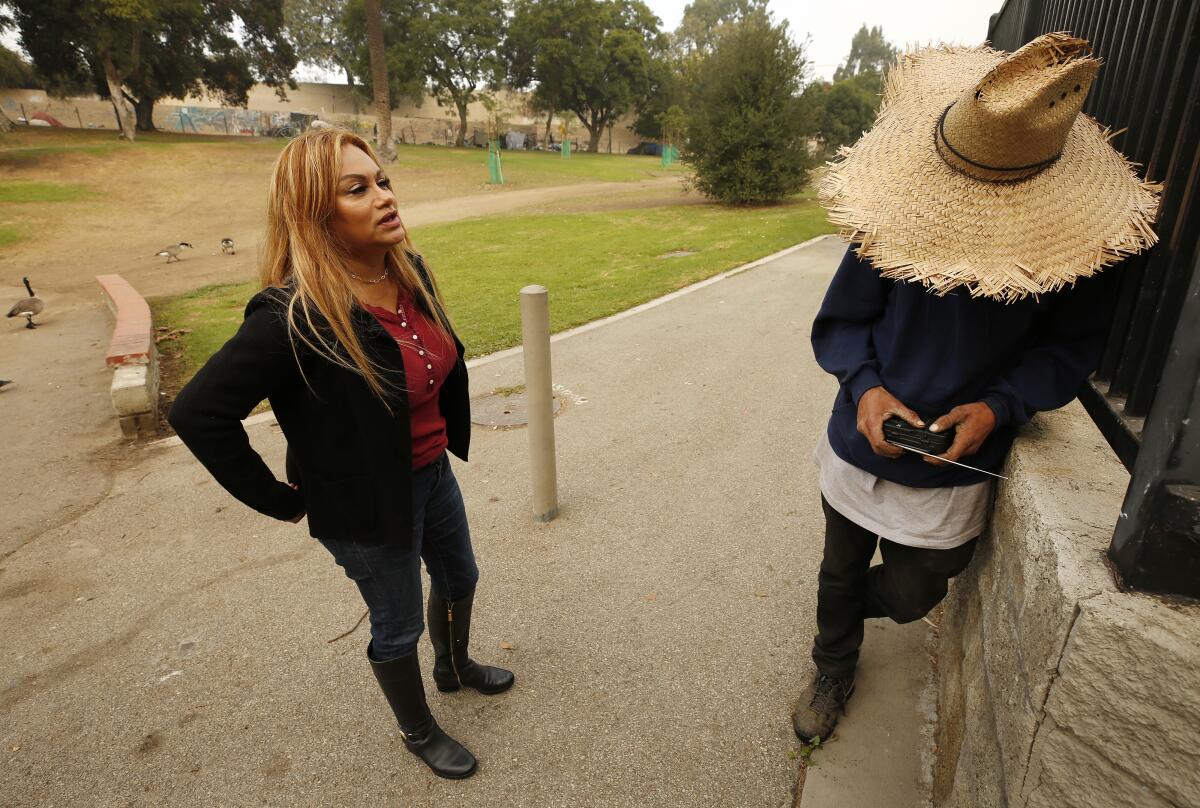
- Share via
On a recent morning, as the blanket of fog lifted into the sky, Aracelly Cauich hurried up a grassy knoll at Hollenbeck Park in Boyle Heights.
She recognized a man pacing nearby with a sandal on one foot and a frayed tennis shoe on the other. She smiled and the two caught up for a minute.
“I had housing,” the man told Cauich in Spanish, “but I lost it.”
“I know, I know,” she said, reassuringly. “But you’re on the list.”
Cauich lives a short walk from Hollenbeck Park and spends much of her free time there, often arriving with a jug of water or homemade tortas for the homeless people she has befriended in the park. She gives everyone her cellphone number and stays in touch with people who recently moved into rooms at the L.A. Grand Hotel Downtown after officials cleared out a large encampment at Hollenbeck.
This fall, she hosted several events in the park where people from the community could get linked up to mental health services, and in the future she hopes to open a workshop where people with disabilities and those experiencing homelessness can make a living.
“There is so much we can do!” she said.
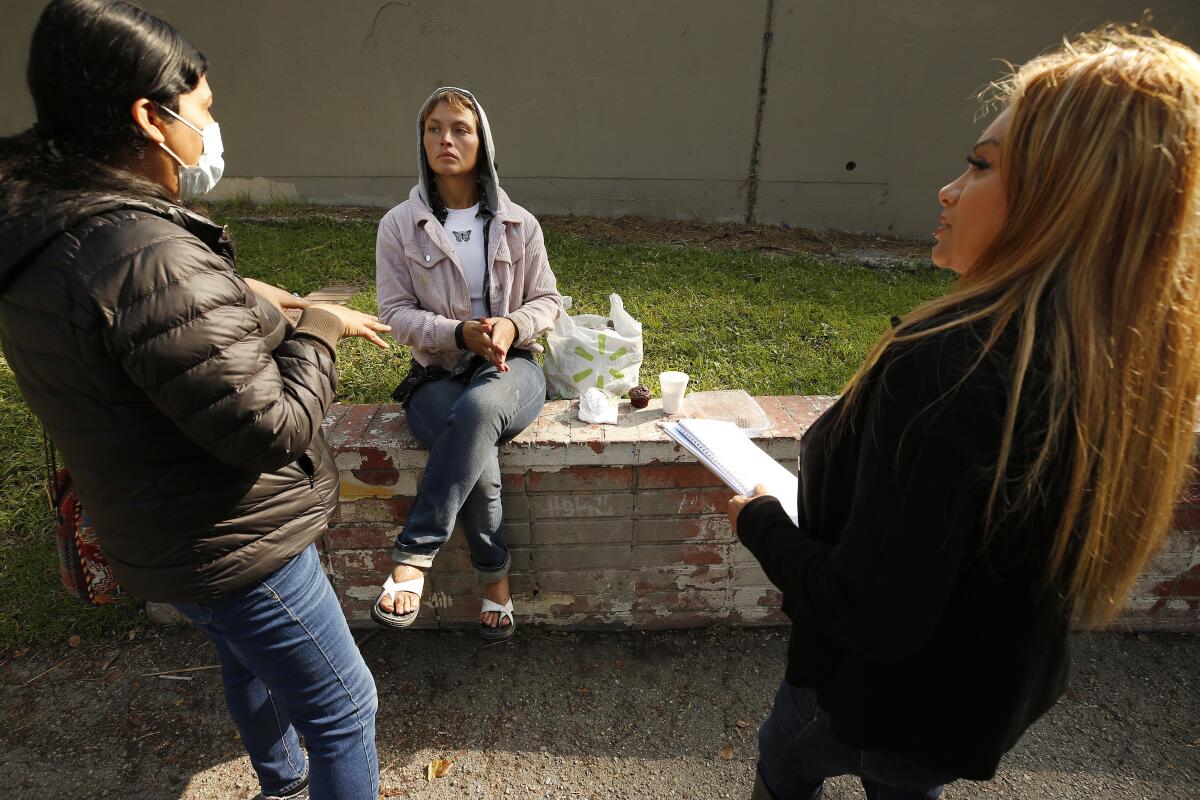
Both in her personal connection to the issue of homelessness and her hopeful outlook about future solutions, Cauich is emblematic of a larger trend borne out in a new poll of Los Angeles County voters: While Latino and Black respondents were the most likely to have either experienced homelessness or housing insecurity in the last year or to have known someone who had, they were also more optimistic about solving homelessness than their white and Asian American counterparts.
The poll, which was conducted by the Los Angeles Business Council Institute in cooperation with The Times, found that 94% of voters view homelessness as a serious or very serious problem. There were, however, demonstrable differences in outlook that broke down along racial and ethnic lines.
While white voters most often cited lack of access to healthcare as the root cause of homelessness, Black, Latino and Asian American voters most often pointed to soaring housing costs and low wages. Black and Latino voters were also more likely to say they thought officials should prioritize providing services over clearing encampments.
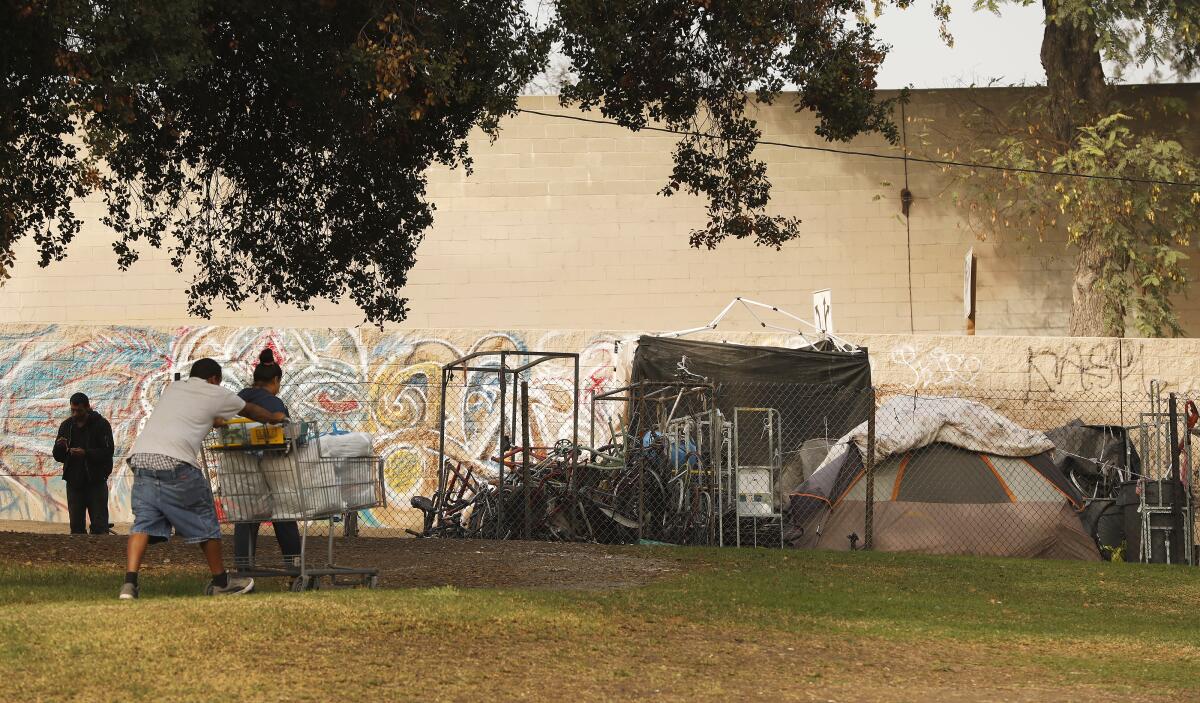
“When we talk about the population of homeless in skid row and the amount of the homeless that are people of color, you’ve got to understand this: It’s a direct relationship to the lack of opportunity that is there for people in L.A.,” said Shirley Raines, founder of Beauty 2 the Streetz, a nonprofit that provides hot meals and makeovers to people on skid row.
Every Saturday for the last four years, Raines, 52, has risen before the sun, put on her trademark colorful makeup and packed her car with supplies. She arrives with food, hygiene kits, sleeping bags, blankets and, these days, hand sanitizer and face masks. For several hours, she gives haircuts, braids hair and does people’s makeup, a process that lifts their spirits — and her own.

She grew up in Compton, an environment that she says was rife with trauma and “negative talk,” and because of her upbringing, she said, she identifies deeply with the homeless people she meets. She knows that many of them got the same message from the world that she did: “You will never be nothing, never have nothing. You’ve come too far in your trauma, that there’s no way of coming back from it.”
Raines’ 2-year-old son died in 1990 after accidentally ingesting medication, and she was stricken by grief for years. On the anniversary of his death in 2017, her twin sister suggested she channel her hurt into a cause and she began serving Meals on Wheels and joined a support group for women who lost children.
She found that too painful, but soon took her first volunteer trip to skid row.
“I just felt at home, I felt like I didn’t have to change. I didn’t have to put on a façade,” she said. “I could go out there and be myself. And they could be themselves without any judgment.”

The volunteer work she does now brings back memories of her grandmother and other matriarchs in the community who lived in service to their neighbors in Compton.
“If your parents were at work, my grandmother was watching you,” she said. “If you couldn’t eat, my grandmother was feeding you.”
The work she does on skid row often requires her to enforce boundaries and to grow comfortable with disappointment, Raines said, but it is also deeply encouraging.
“I don’t have a lot of stories about getting people off the street,” she said. “But I do have a lot of stories about people still waking up despite the circumstances that they’re in and coming to see us.”
::
In a trend that plays out across the nation and worsened during the pandemic, Los Angeles’ homeless population is shaped by steep racial inequities. Black residents account for roughly 8% of L.A. County’s population, but 34% of its homeless population, according to a recent report from the Los Angeles Homeless Services Authority.
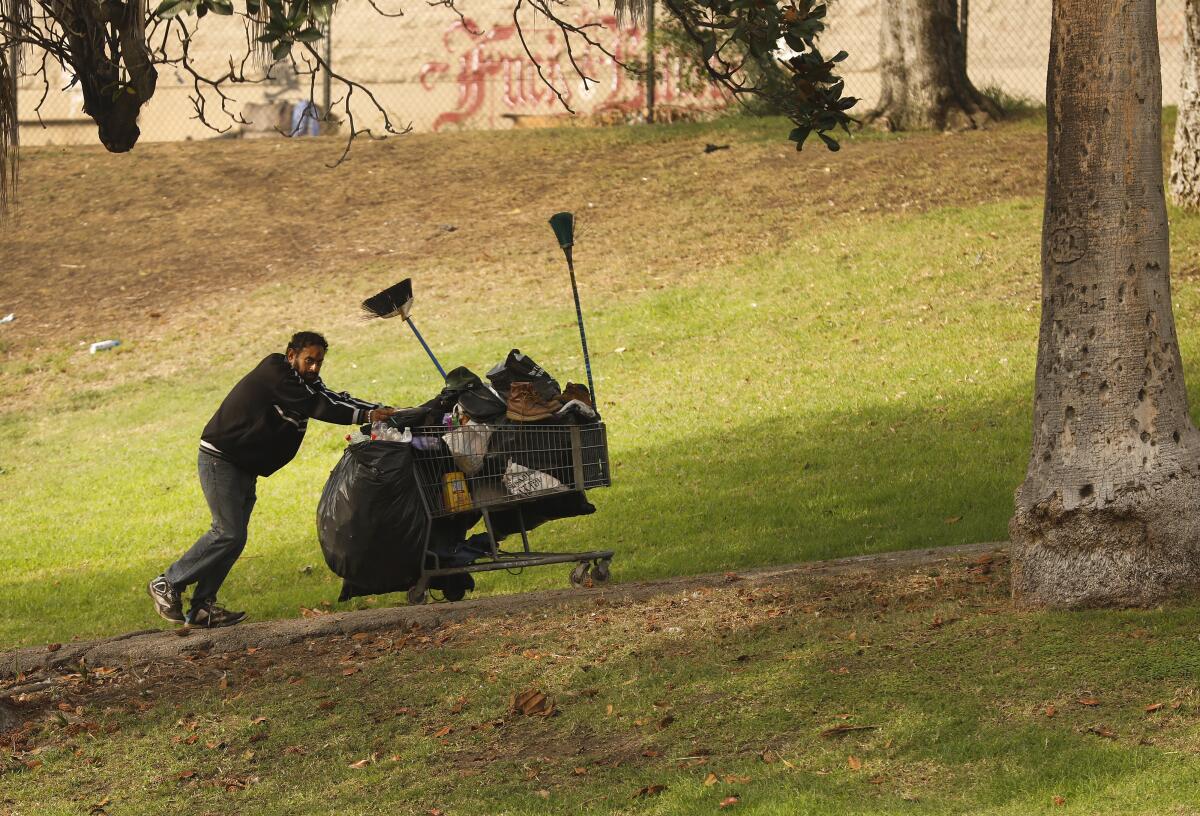
And those intractable inequalities are often cited by local officials — who during the pandemic made an ambitious but faltering push to move homeless people into empty hotel rooms and outlawed sitting and sleeping at parks, libraries and some other locations, even as they cleared out encampments in MacArthur Park, Echo Park and Venice.
Respondents to the recent poll were asked to choose words describing how they felt about homelessness, including “sympathetic,” “unsafe,” “angry,” “indifferent,” “hopeful,” “disappointed” and “sad.” Black and Latino voters reported feeling “sad,” “disappointed” and “sympathetic” at higher rates than white and Asian American respondents, who were more likely than Black and Latino voters to feel “unsafe.”
“Sad” is the first thing that comes to Blanca Rodriguez’s mind.
“I feel a deep sadness,” the 69-year-old said through tears on a recent afternoon while standing in the doorway of her shop, Blanca’s Beauty Salon, off a strip of Whittier Boulevard that weaves beneath the 60 Freeway.

There, in the shadowed underpass, three people slept on tattered mattresses as cars zipped by. Rodriguez said one man who used to live there often meandered the sidewalk outside her shop, frequently bending down as if to pick up something even though nothing was there. His mind had betrayed him, she could see, and she often said a quick prayer asking God to protect him.
“We’re all the same,” she said. “We all come from a mother’s womb and we will all die.”
Rodriguez knows what it feels like to stress over finances — she easily saw 10 customers a day before the pandemic, but now is lucky to give even a single haircut or two a day. Many months, she makes barely enough to cover the $700 payment on her home and has had to dip into her small savings to cover bills and food.
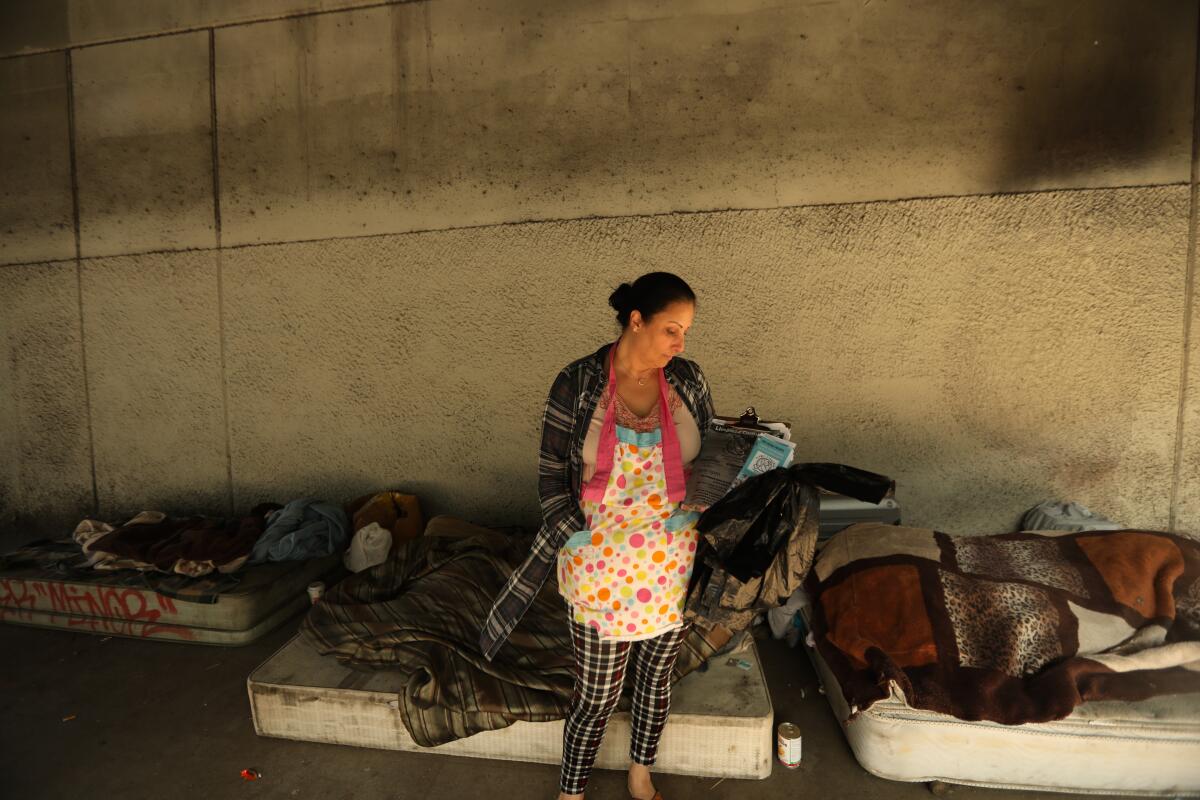
She said she hopes that, going forward, politicians will prioritize immediate help for homeless people, including moving them into vacant apartments or hotel rooms.
“The need is now.”
::
Beverly Vasquez, a manager at Nimbus Coffee in downtown L.A., said she interacts with unhoused people almost every day.
Some businesses in the area, as well as some residents and police, react by shooing the unhoused away, she said, moving them somewhere else — anywhere else.
But she and the owners of Nimbus, all women of color, try to take a different approach where they can, handing out water during slow hours and sometimes doling out unsold pastries at the end of the day.
One morning while heading into work during a rainstorm, she noticed a woman she’d seen before — a thin, Black woman in her 20s or 30s — and invited her into the shop for a pastry and shelter from the rain.
Navigating interactions with unhoused people can be difficult for businesses, Vasquez acknowledged, noting that the women who run Nimbus work hard to maintain a pristine storefront and sometimes have anxieties about their safety early in the morning and late at night.
“It is a little unsettling when you see groups of people living near your business,” Vasquez says, but still she favors a more humane approach over harsh policing of unhoused people.
“People have to remember that can easily be you.”
::
Back in Hollenbeck Park, a 44-year-old woman, who introduced herself using only her first name, Lourdes, sat in the shade of a palm tree, folding clothes.
She’d been homeless for three months, she said, and had come to the park that morning to change in the bathroom and relax somewhere she felt safe — a place where the paranoid thoughts that sometimes run through her mind would slow. She picked up a T-shirt and ripped it in half, tying the strip of fabric around her head to cover several scabs — reminders, she said, of a meth addiction she desperately wants to break.
“I just need help,” she said, “real help.”

Brenda Martinez, the homeless liaison for the Boyle Heights Neighborhood Council, said she believes more opportunities for drug addiction treatment and more sustainable housing options are key components to reducing homelessness.
“This problem is just going to get bigger and bigger,” she said, adding that most people in the neighborhood are renters and will only have a harder time staying in their homes given the rapid gentrification of the area and stagnation of wages.
Although Boyle Heights doesn’t get nearly the same amount of resources as nearby skid row, many of the problems from that stretch of downtown spill over into Boyle Heights, said Martinez, who added that she believes the truest solution lies in increasing wages for workers in low-income communities.
“Families here are very proud. They want to be able to afford their food,” she said. “They want work. They want better wages.”

She finds a lot of hope in the work of people in her community, like Cauich, her close friend.
For Cauich, her deep passion for giving back grew out of understanding. She vividly remembers the day years ago when she came home to her apartment and found new locks on the door. She was going through a divorce and had lost her job as a cashier, so for a time she slept sitting up on a bench outside in Koreatown with her two children, then 3 and 4, asleep beneath a blanket in a stroller.
Now, whenever a homeless friend flashes a look of bewilderment and asks why she does what she does, she gives a variation of the same answer.
“I was in your shoes once.”
More to Read
Sign up for Essential California
The most important California stories and recommendations in your inbox every morning.
You may occasionally receive promotional content from the Los Angeles Times.
















